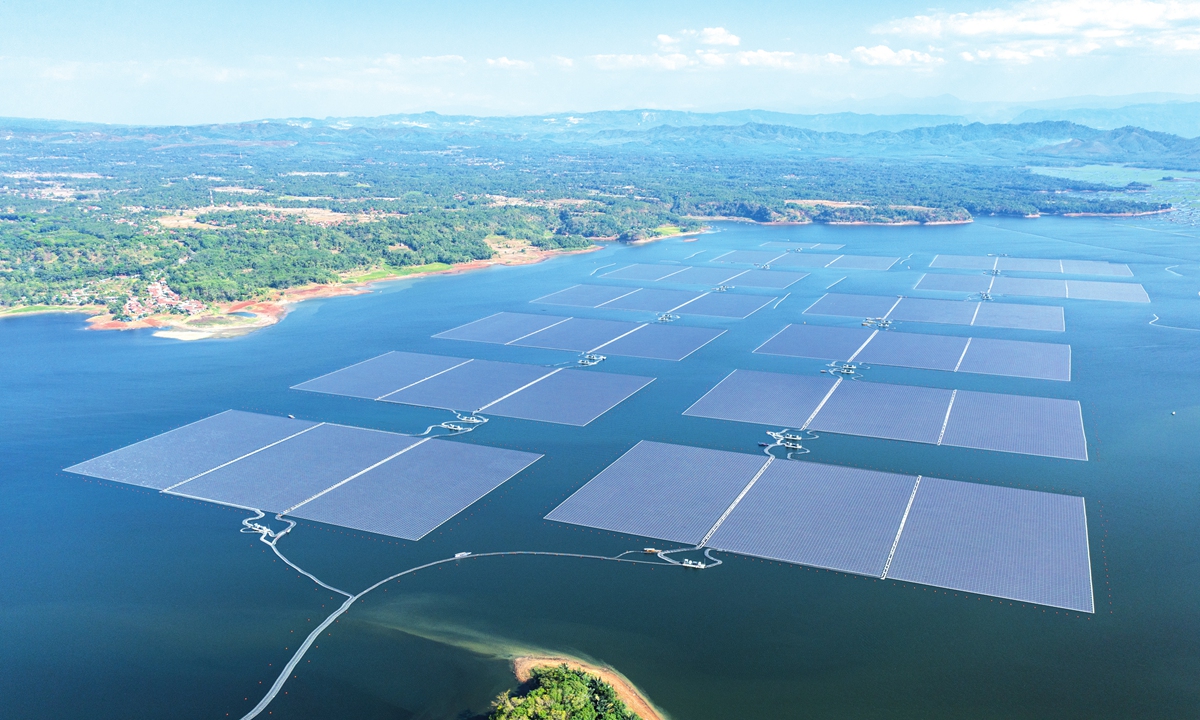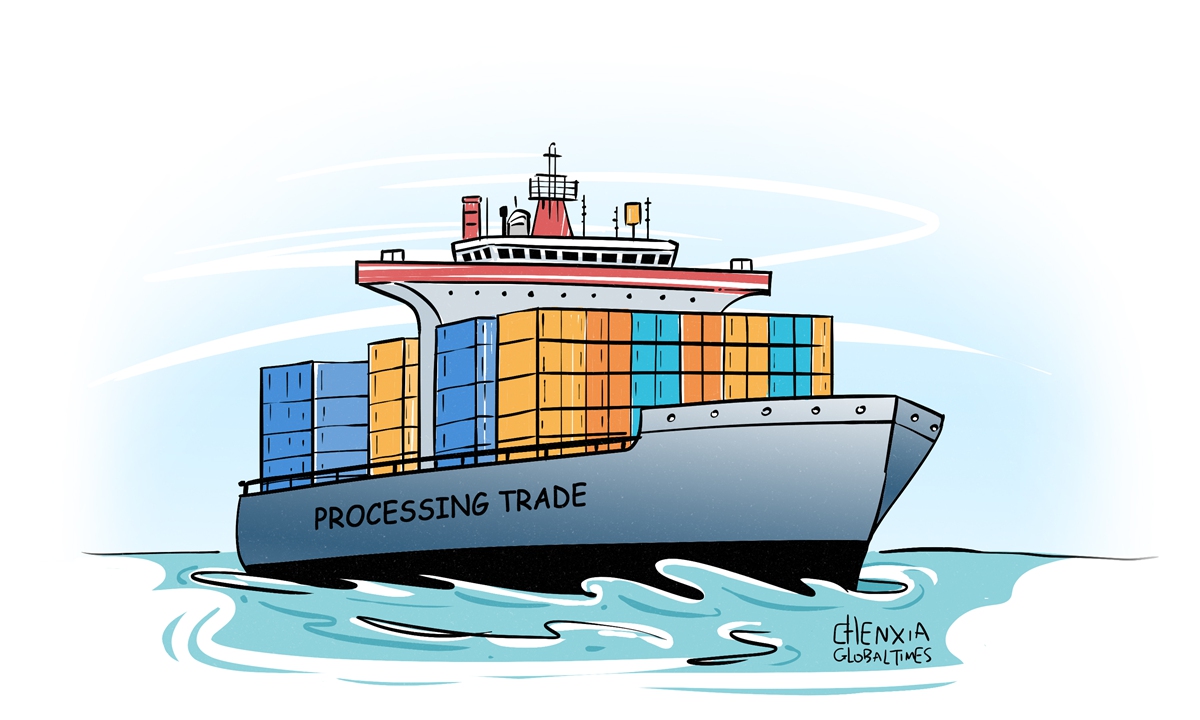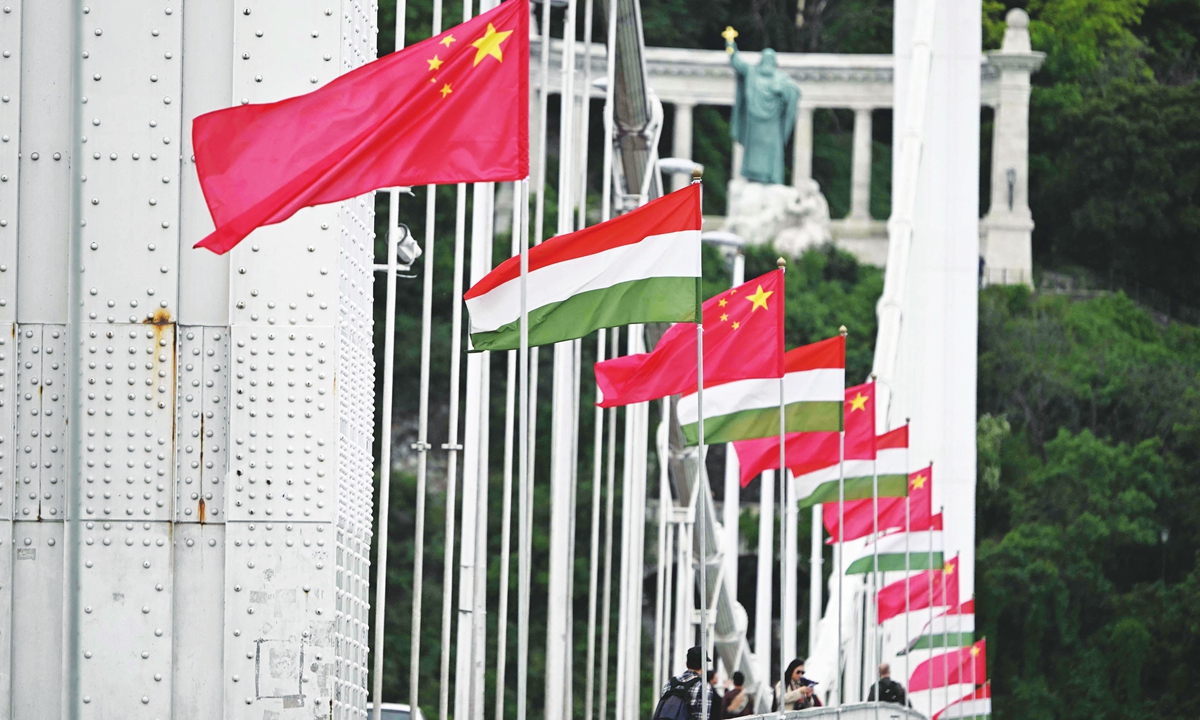China exports ‘advanced capacity’ to BRI partners; cooperation is based on economic complementarities, local demand
China exports ‘advanced capacity;’ cooperation built upon economic complementarities, local demand

The Cirata Solar Floating Photovoltaic Power Plant, contracted by Power China, in Indonesia's West Jawa province Photo: Courtesy of Power China
Editor's Note: As China's new-energy industry gains global pre-eminence, US officials have started a smear campaign based on the false "overcapacity" narrative. The rise of China's new-energy sector is due to homegrown innovation and free market contest, rather than subsidies, and is beneficial for the world, instead of posing threats to other countries. To illustrate this, the Global Times is publishing a series under the theme of "New Energy, New Opportunities." This story focuses on how the Chinese new-energy vehicles (NEV) industry draws its competitiveness from free competition, debunking the baseless claim that Chinese NEV strength stems from state subsidies. This is the fifth installment of the series.
Since the Belt and Road Initiative (BRI) was first proposed in 2013, there have been waves of disparaging campaigns by Western politicians and media outlets targeting the initiative - which have all lost traction during the past 11 years in the face of the BRI's extensive development worldwide.
Now, the US government is attempting to renew some of its reckless smearing campaisn, drawing on the so-called "overcapacity" card to label Chinese industries, a farce that reminds the world of how it has been maliciously hyping that the BRI was created in response to China's "industrial overcapacity."
A closer examination into the development of green cooperation under the BRI easily debunks the lies made up by Washington. Business leaders told the Global Times that one of the most tangible benefits of BRI is that it is helping partner countries on their path to green and sustainable development, as some are in a transition period to reduce reliance on fossil fuels while others are ramping up efforts to combat climate change. And the new-energy transformation has also prompted industrial upgrade and brought more development opportunities for China's BRI partners.
Foreign scholars and analysts also hit back at the US-orchestrated "overcapacity" allegations targeting BRI, noting that such accusation does not stand a ground in the premise. Global industrial cooperation under BRI, in contrast to "exporting outdated capacity" claim, is built upon economic complementarities and rising local demand. It is carried out in an equal manner with the recipient countries to create new tech-led industries, analysts said, which enables the developing countries to have equal access to the dividends of technological progress as the developed world has enjoyed.
Green cooperation thriving
In Indonesia's West Jawa province, a total of 13 photovoltaic (PV) units are floating above the water in the Cirata reservoir. The Cirata Solar Floating PV Power Plant, with an installed capacity of 192 megawatt, is the largest floating solar power plant in Southeast Asia. The project achieved full-capacity grid-connected power generation in November last year.
A spokesperson of Power Construction Corporation of China (Power China) told the Global Times on Thursday that the electricity generated by the floating PV power plant now accounts for 25 percent of the electricity generated by green and renewable energy sources. Power China is the contractor of the project.
"When the project reached a capacity of generating 300,000 megawatt-hours a year, it is able to provide clean energy to around 50,000 Indonesian households. That is equivalent to cutting 117,000 tons of standard coal consumption per year, and reducing the annual emission of carbon dioxide, coal dust and sulfur dioxide by 214,000 tons, 82,000 tons and 9,000 tons, respectively," the spokesperson said.
He added that the Cirata floating PV project, aligning with the Indonesian government goal of expanding the use of renewable energy, will also bring more benefits to local communities in industries such as aquaculture and fishing, and create a good number of job opportunities there.
Indonesia is the world's largest archipelagic nation with vast maritime areas and abundant solar energy resources. The Indonesian government, set to achieve net zero emissions by 2060, had decided to use solar power plants as the backbone to supply clean energy in Indonesia.
"Most countries in Southeast Asia lack access to oil resources and are heavily relying on energy imports, which makes them vulnerable to global energy price fluctuation and geopolitical tensions," Wirun Phichaiwongphakdee, director of the Thailand-China Research Center of the Belt and Road Initiative, told the Global Times.
He stressed that the BRI cooperation on new-energy development ensures the energy security of Southeast Asian economies, and more importantly, makes those countries embark on new-energy supply chain localization, which is critical for their industrial upgrade that could unlock significant development opportunities.
Export of 'advanced capacity'
According to the white paper on BRI issued by the State Council Information Office last year, China has reached environmental cooperation agreements with more than 30 countries and international organizations, launched the Initiative for Belt and Road Partnership on Green Development together with 31 countries, and formed the Belt and Road Initiative International Green Development Coalition with more than 150 partners from 40-plus countries.
In addition to facilitating recipient countries' journey to the green transition, the BRI cooperation - taking account of local demand for environmental protection - has been implementing the green elements into every front, another strong rebuttal to claims that BRI projects would "damage local environment," several Chinese firms said.
"When undertaking the second phase of the United Arab Emirates Railway project, we did a careful prior research on surrounding animal groups, plantations, water resources and cultural legacy to reduce the impact on local environment to the minimum level," a spokesperson of China Civil Engineering Construction Corporation (CCECC) said, exemplified by a tailor-made passage for wildlife animals set at the neighboring area.
"The BRI green development also concerns ecological protection and sustainable development, and Chinese companies are also doubling down efforts in this regard to achieve win-win cooperation," the spokesperson told the Global Times.
Observers said that the new-energy cooperation momentum that is taking shape in BRI partner countries represent the export of China's advanced innovation result that is formed by its technological breakthrough, rather than outdated capacity. Those are also the newly rising industries that the countries and regions along the BRI crave to build up, and the industries that the Western countries - out of the nerve to lose technological dominance in the world - reluctant to cooperate with, the analysts said.
Previously, the US politicians, keen at geopolitical zero-sum thinking, hyped the so-called Chinese "predatory investment", "debt trap" or "hegemonic strategy," and now they switched their narrative to Chinese industrial "overcapacity." All those allegations reflect the well-known hostility of the US politicians to China-proposed BRI, Claudio Celani, economic editor of news magazine Executive Intelligence Review, told the Global Times.
"Regardless of how the US has been creating discords in BRI cooperation, the BRI partner countries, having a clear understanding on the mutual benefits brought by their deepening economic ties with China, will not buy into the rhetoric," Wirun Phichaiwongphakdee said, noting that it is important that the developing countries are entitled to the same development rights as the Western developed world.





